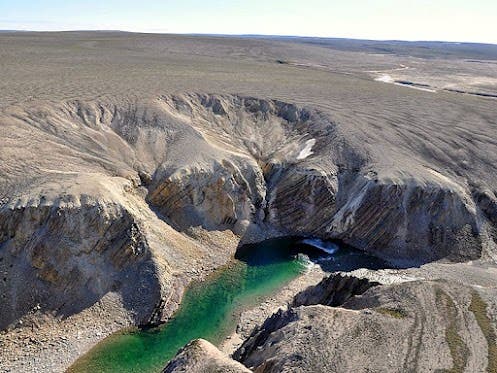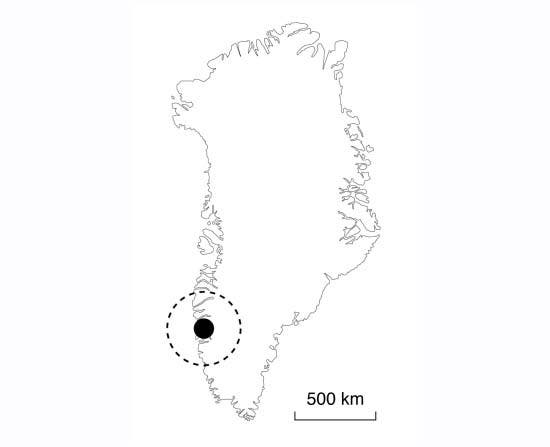Researchers have found evidence that the crater in case was formed when the ground was slammed by a massive meteorite, millions of years ago.
Prince Albert crater
Measuring about 25 kilometers across, Prince Albert crater was named after the peninsula in which it was discovered. Researchers never were really sure when it was formed, the likely period being between 130 million and 350 million years old, according to geologists from the University of Saskatchewan.
A team spotted this newly identified crater totally random, while surveying the area for mineral and energy resources. Initially, they were intrigued by steeply tilted strata visible in river gorges, as well as other strange features of the area.
“Unless you recognized the telltale clues, you wouldn’t know what you were looking at,” researcher Brian Pratt explained in the statement. “You might see a bunch of broken rocks and wonder how they got there, but we found abundant shatter cones.”
Shatter cones are extremely rare geological features which form only in the bedrock beneath meteorite impacts or nuclear explosions. Shatter cones have a distinctively conical shape that radiates from the top (apex) of the cones repeating cone-on-cone in large and small scales in the same sample.
“Impact craters like this give us clues into how the Earth’s crust is recycled and the speed of erosion, and may be implicated in episodes of widespread extinction of animals in the geological past,” Pratt said. “It’s an exciting discovery.”
The biggest and oldest crater
At the moment, there are some 180 known impact craters on Earth – geologists would have found many more by now, if it hand’t been for the continuous action of plate shifting, erosion, crust recycling and volcanic activity. Earlier this year, researchers from Greenland reported the finding of what may be the oldest and largest meteorite crater ever found on Earth.
Researchers estimate the crater is some 3 billion years old, and measures 100 kilometers from one side to another; however, given the extremely old age, it probably measured over 500 kilometers in its ‘glory days’. The team believes it was caused by a meteorite 30 kilometers wide, which, if would hit Earth today, would pretty much wipe out all advanced life on our planet.












